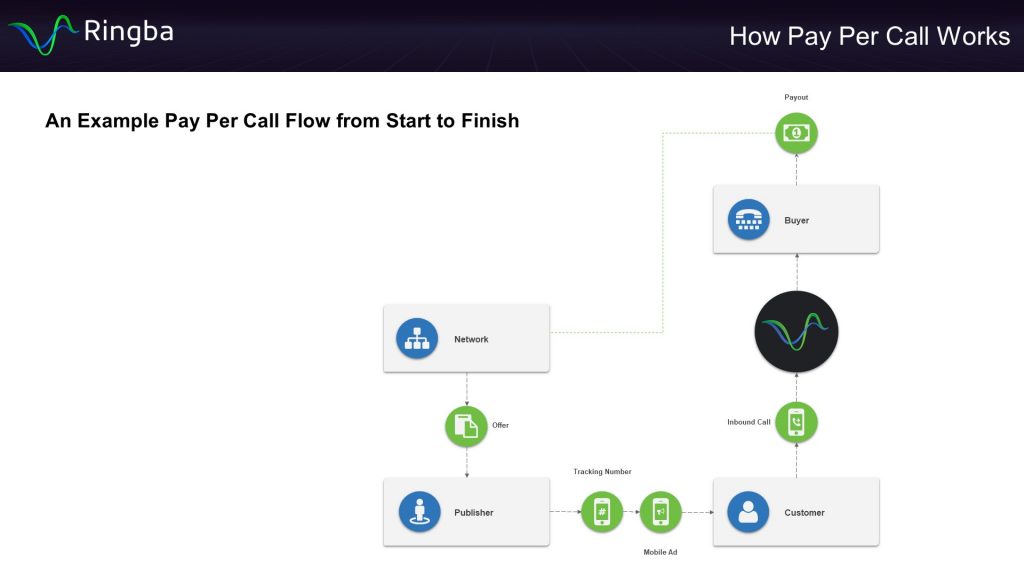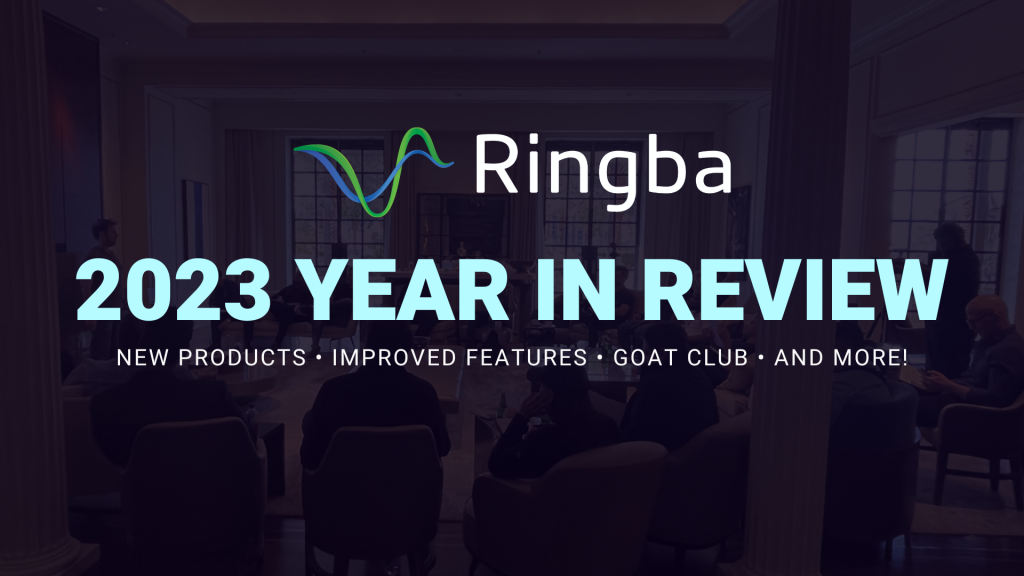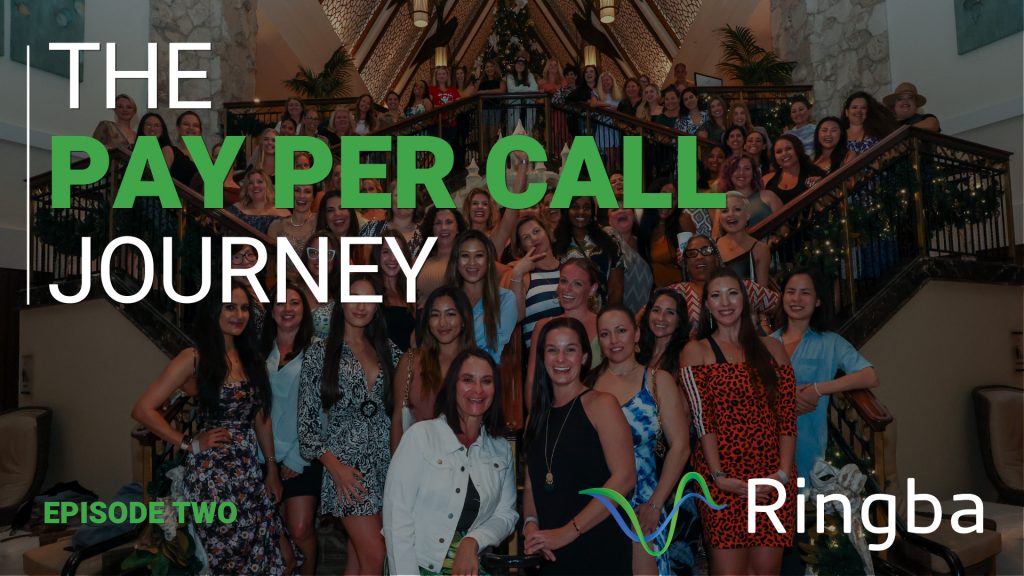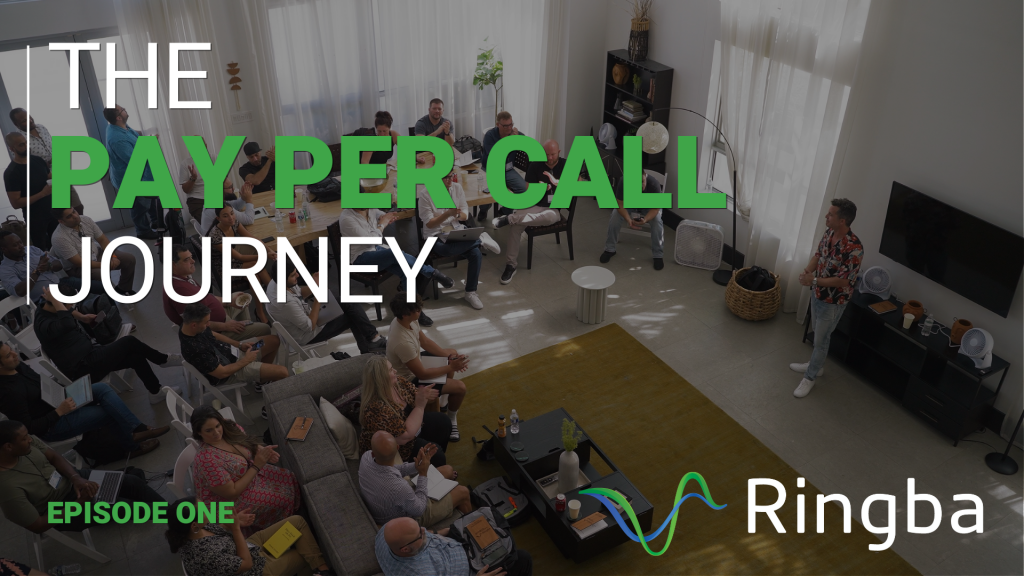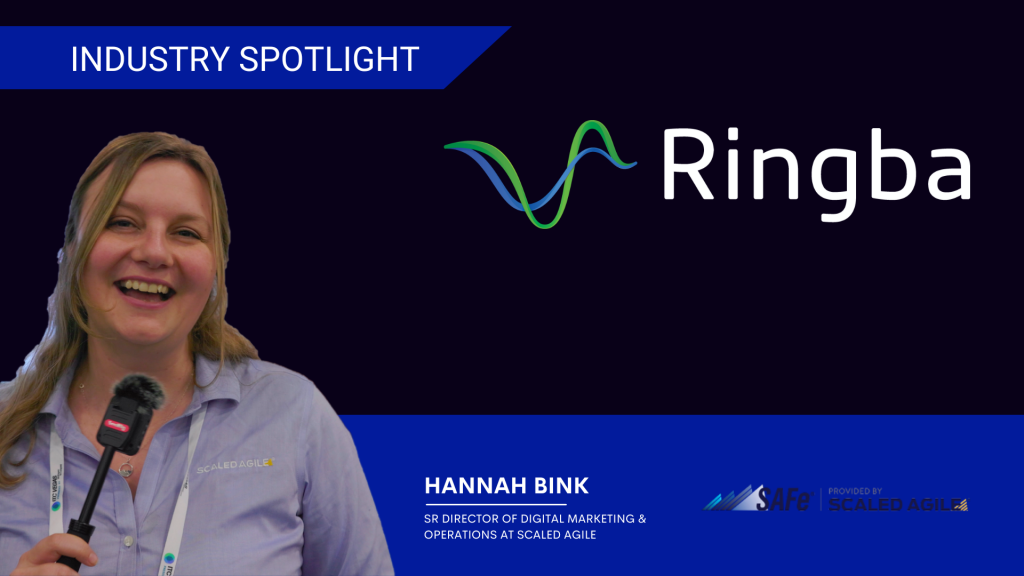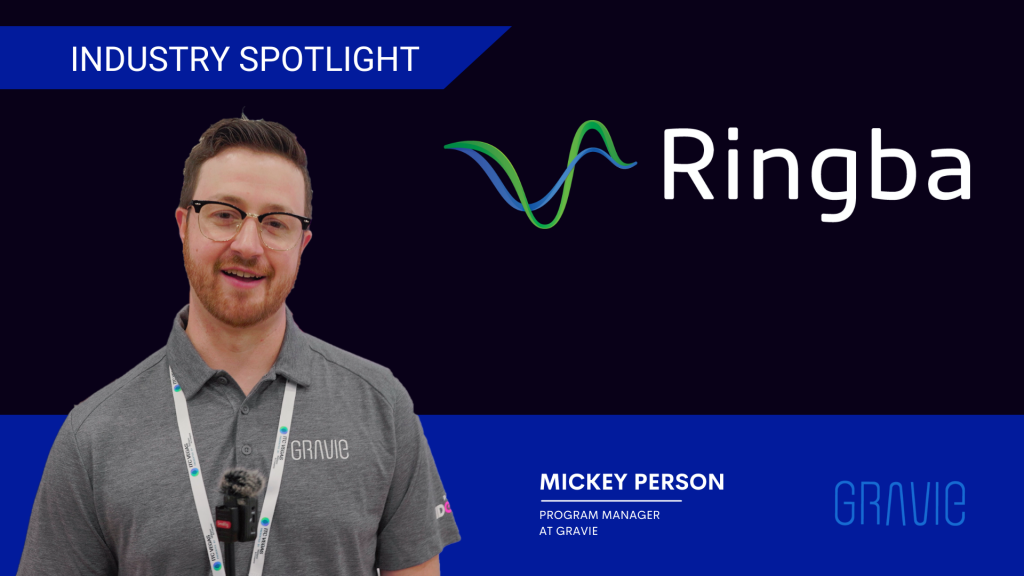Learn how Pay Per Call works, who’s involved, the technology used and what an inbound call flow looks like from start to finish.
Contents:
– Pay Per Call Explained
– Example Pay Per Call Flow from Start to Finish
– Advertiser Creates a Pay Per Call campaign
– Pay Per Call Network promotes the campaign to their Publishers
– Publishers apply to the Pay Per Call campaign and receive a unique tracking number
– Publishers generate inbound calls through traffic sources
– Customer sees tracking numbers and clicks to call
– Call is tracked and attributed to the publisher that generated the call
– Customer is routed to the Advertisers
– Publisher receives commission for calls that meet the payout criteria for the campaign
– Pay Per Call Flow Diagram
Pay Per Call Explained
Pay Per Call is an advertising model that allows businesses to buy inbound phone calls from consumers who are interested in their products and services. This model is fantastic for the business owner because it shifts the cost of acquisition risk from the advertiser (the company that needs customers) to the Pay Per Call which can be a broker or directly to the affiliates of the offer. Offers are their products or services or whatever that company needs to sell – allowing the advertiser or business to predict their cost of acquisition and stabilize their marketing activities while providing a unique opportunity for the brokers and affiliates to create large amounts of profit by leveraging their marketing abilities.
Phone calls carry the highest intent of any consumer action. People only call if they’re interested in the product or service offering and they know when they call that they may buy something. When people pick up the phone, they only call when it’s super important to them and typically when they’re ready to whip out their credit card and buy right away, and that’s the exciting thing about phone calls and why it’s perfect for the businesses and really good for the brokers and affiliates.
For instance, if a company buying phone calls is paying $10 per call, and has an average close ratio of 25%, they know that the cost of acquiring a customer is approximately $40 every time. This means they do not have to take the risk of new advertising campaigns, learning new promotional methods, creating new promotional materials, and other skills related to marketing. The advertiser can simply focus on their business and leave all of the marketing and user acquisition to their partners.
The fixed cost of a call also creates a huge opportunity for skilled and clever marketers to come up with new ways to promote a campaign. The Advertiser is never aware of the cost of acquisition so they have no idea what the affiliate or brokers profit margin is, thus once a successful campaign is designed and running, the promoters can reap the benefits for as long as the advertiser is willing to buy the calls, or as long as the campaign lasts. A true win-win for all parties involved.
It means once you figure out how to generate these phone calls for the buyers, you never let them know what your profit margin is and maybe you’re selling a call for $25 and it only costs you $2 to generate and the vast majority of it is profit for you and then you can just continue to profit on an ongoing basis while working with your partners and they’re super happy about this because they know what their cost of acquisition is. Pay Per Call is really an amazing advertising model.
Pay Per Call Flow from Start-to-Finish
Let’s take a look at what a Pay Per Call Flow looks like from start to finish so that you understand the journey of a consumer as they go through this process and what happens every step of the way:
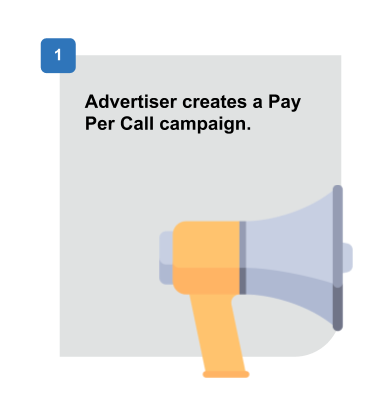
Step 1) Advertiser Creates a Pay Per Call campaign
First, the advertiser creates their Pay Per Call campaign. This is for a product or a service that they want to sell. Now, these products or services can be anything from any industry all over the world. I want you to think about things you’ve seen before on billboards, TV infomercials, heard on the radio, seen online. Just about any time you’re instructed to call someone to buy, this can be a Pay Per Call campaign. It can be for a dentist office, it can be for plastic surgeons, lawyers, tow trucks, it can be the insurance industry. I mean anything where someone can pick up the phone and make a purchase, you can create a Pay Per Call campaign out of it.
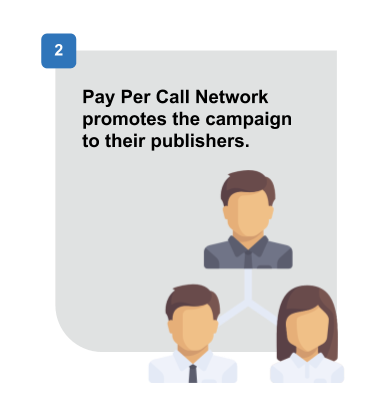
Step 2) Pay Per Call Network promotes the campaign to their Publishers
Next, a Pay Per Call Network promotes a campaign to their publishers. Most of the time, brokers connect affiliates and advertisers, and affiliates are also publishers. These terms can be interchangeable, and so these brokers are usually called Pay Per Calls, and they facilitate the relationships, the tracking, and the accounting between all of the parties. Mostly the broker sits in the middle and connects the advertisers and the publishers so that neither party has to go through the process of managing all those connections. So networks and brokers take a margin or a cut of that transaction between the advertisers payout and what they pay affiliates to facilitate this process and manage some of the setup, creation of the assets, and do all that business development work.
![]()
Step 3) Publishers apply to the Pay Per Call campaign and receive a unique tracking number
Once campaigns are set up by networks, affiliates can apply and promote these campaigns and receive commissions for every valid inbound call that they generate that qualifies for a commission. So there are all sorts of different rules and requirements for every campaign, and as long as a call meets those rules and conditions, it’ll generate a commission. Typically a network will provide an affiliate a phone number to use in promoting their offer to route their phone calls. Essentially what will happen is this broker network gives a phone call to their affiliate, the affiliate provides a phone number to their affiliate, that affiliate takes the phone number, they place it on their promotional materials on the internet, on websites, blogs, billboards, whatever they’re going to do, and then whenever someone calls the network tracks that.
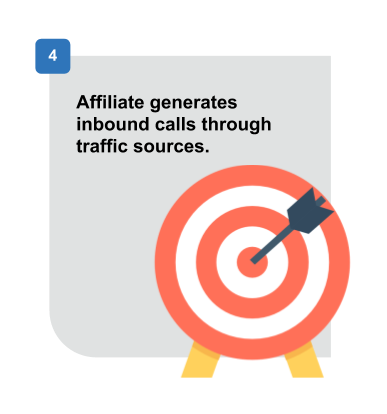
Step 4) Publishers generate inbound calls through traffic sources
Publishers then create advertising campaigns on the internet or through traditional media or other channels to hopefully find consumers that are interested in the advertiser’s products or services. A publisher’s going to take that number, they’re going to put it on a blog, maybe an insurance blog where people come to find out information about insurance and then people see the phone number, call it, and when those calls happen, the publisher generates a commission. Now next up in the chain is like I just said the customer sees the tracking numbers and clicks to call, or they pick up their phone and call if they’re on a desktop computer. A customer views the advertisement, and if they’re interested in the product or services that are offered, they call the affiliates unique tracking number.
![]()
Step 5) Customer sees tracking numbers and clicks to call
So, the customer calls, they call the tracking number. Now they’re routed to the advertiser. After the call, the consumer is routed to the advertisers call center, through the network in real time. Literally they pick up the phone, they dial the number, and then within a few seconds are connected in real time. Now, depending on the network or broker, the call may go to any number of potential buyers based on the caller’s information, the concurrency available, the hours of operation of the buyers, the capacity, and other limiting factors. Just because you’re driving calls to a Pay Per Call or a broker, doesn’t mean the same buyer answers the phone every single time. Those calls are getting load balanced all over the place, and we’re going to talk about that later in the program.
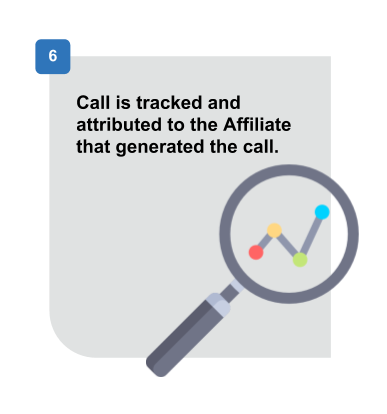
Step 6) Call is tracked and attributed to the publisher that generated the call
Next, a publisher receives a commission for calls that meet pay up criteria for the campaign. When a call meets all of the required qualification criteria, the affiliate is credited their commissions through the call. Now, every campaign is going to have unique qualifications; the callers have to meet geographic location, specific demographic information, the duration of the call, IVR choices, and a whole slew of other things that have to be achieved depending on what the call is. For instance, if you’re running a campaign for debt consolidation, and one of the requirements is the caller has more than $10000 in unsecured debt. Well, if the caller answers an IVR choice that’s done you have less than $10000 in unsecured debt please press one, you probably aren’t getting paid for that call because it did not meet the requirements. Or if it’s an insurance campaign and the company is only licensed to take calls in California, and you send them a bunch of calls from Massachusetts, those calls are probably not going to get paid for because they don’t meet the criteria of the campaign.
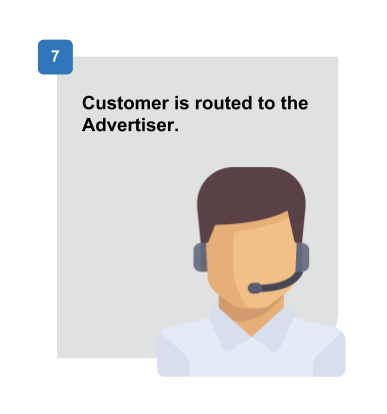
Step 7) Customer is routed to the Advertisers
After calling, the consumer gets routed to the advertiser’s call center in real-time. Depending on the Network or Broker, the call may go to any number of potential buyers based on caller information, concurrency, hours of operation, capacity, and other limiting factors.
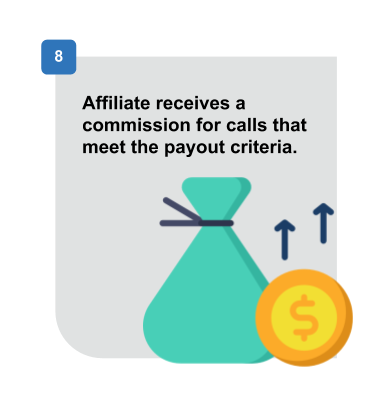
Step 8) Publisher receives a commission for calls that meet the payout criteria for campaign
When a call meets all the required qualification criteria, the affiliate is credited their commissions for the call. Every campaign will have unique qualifications the callers have to meet like geographic location, demographic information, the duration of the call, IVR choices, and more.
Pay Per Call Flow Diagram
